Enlatado a presión vs. enlatado en baño de agua: ¿cuál es la diferencia?

Si eres nuevo en el mundo de las conservas, probablemente hayas oído hablar de los términos "envasado a presión" y "envasado al baño maría" y te hayas preguntado cuál es la diferencia. Ambos métodos son seguros y de eficacia comprobada para conservar alimentos en casa, pero se utilizan para diferentes tipos de recetas. Saber cuál usar es clave para mantener tus alimentos deliciosos y seguros en la estantería.
Enlatado al baño maría
El envasado al baño maría es el más sencillo de los dos métodos. Consiste en sumergir frascos sellados de alimentos en agua hirviendo (a 100 °C al nivel del mar) durante un tiempo determinado.
Ideal para alimentos con alto contenido de ácido: Esto incluye frutas, mermeladas, jaleas, encurtidos, salsas y productos de tomate con ácido añadido (como jugo de limón o vinagre). La acidez natural, combinada con el calor, crea un ambiente seguro donde las bacterias no pueden crecer.
Por qué a la gente le encanta:
- Perfecto para principiantes
- Requiere equipo menos especializado
- Ideal para enlatar lotes pequeños, como mermeladas y jaleas.
Enlatado a presión
El envasado a presión utiliza vapor a presión para alcanzar temperaturas mucho más altas que el agua hirviendo, generalmente alrededor de 110 °C o más. Este calor adicional es fundamental para la conservación segura de alimentos poco ácidos , que no se pueden procesar solo en un baño de agua hirviendo.
Mejor para alimentos con bajo contenido de ácido: Esto incluye verduras (judías verdes, maíz, zanahorias, patatas), carnes, aves, mariscos, sopas y chile.
Por qué a la gente le encanta:
- Conserva de forma segura una mayor variedad de alimentos.
- Mayor vida útil para los alimentos básicos de la despensa
- Abre la puerta a comidas abundantes y listas para comer directamente del frasco.
Entonces, ¿qué método debería utilizar?
¡Todo depende de lo que estés enlatando!
- Frutas, mermeladas, encurtidos y algunas recetas con tomate → Enlatado al baño maría
- Verduras, carnes, frijoles y recetas mixtas como sopas o guisos → Enlatado a presión
Piénselo de esta manera: alto contenido de ácido = baño de agua; bajo contenido de ácido = envasadora a presión.
Lo mejor de ambos mundos con All American 1930
Aquí tienes la buena noticia: con una envasadora a presión All American, no tienes que elegir. Nuestras envasadoras están diseñadas tanto para envasar a presión como a baño maría, así que, ya sea que estés preparando mermelada de fresas o guardando judías verdes para el invierno, tienes la herramienta perfecta.
Las envasadoras a presión All American están hechas de aluminio fundido de alta resistencia, diseñadas para durar décadas y en las que los envasadores caseros confían desde 1930. No solo son versátiles, están diseñadas para toda la vida.
Cómo envasar al baño maría con una envasadora a presión All American
Con solo unos pequeños ajustes, puede procesar de forma segura alimentos con alto contenido de ácido, como mermeladas, encurtidos y salsas, utilizando el método de agua hirviendo. A continuación, le explicamos cómo:
- Prepare sus frascos y su receta tal como lo haría normalmente para enlatar al baño maría.
- Llene la envasadora con agua, suficiente para cubrir los frascos al menos 1 pulgada una vez que estén adentro.
- Cargue los frascos en la envasadora utilizando un elevador de frascos.
- Coloque la tapa sin apretar sobre la envasadora, pero no la sujete con las tuercas de mariposa. Esto permite que el vapor escape libremente.
- No coloque el peso del regulador de presión. Recuerde que no está envasando a presión; simplemente está usando la envasadora como un gran baño de agua hirviendo.
- Pon el agua a hervir completamente y procesa los frascos durante el tiempo especificado en tu receta.
- Cuando haya terminado, retire con cuidado los frascos con un elevador de frascos y déjelos enfriar, revisando los sellos una vez que estén a temperatura ambiente.
¡Listo! Con una envasadora a presión All American, puede envasar a presión alimentos de baja acidez y envasar al baño maría sus favoritos con alta acidez, como mermeladas, encurtidos y salsas, todo en un mismo y resistente equipo.
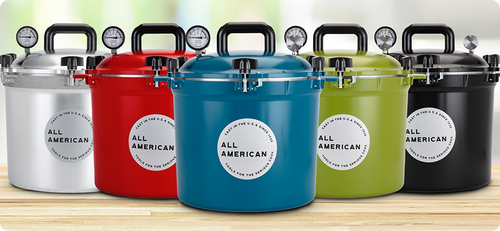
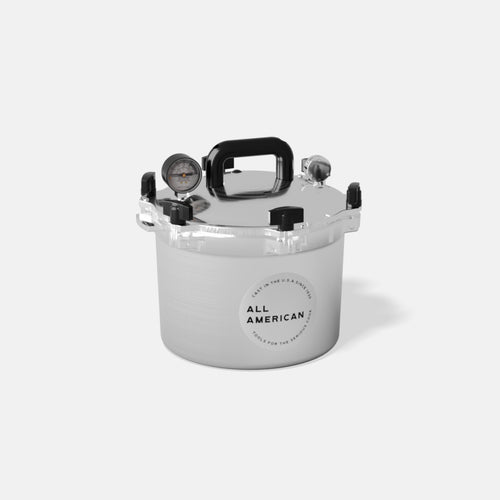 >
>
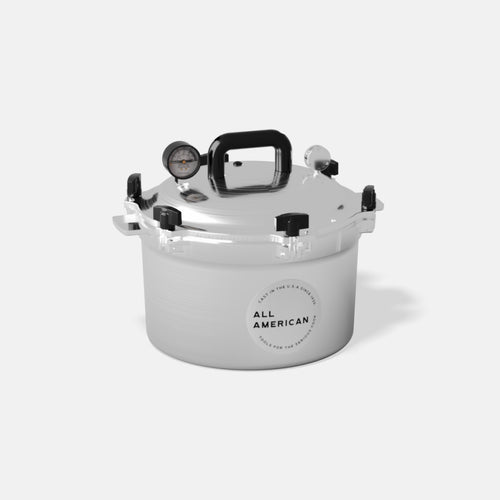 >
>
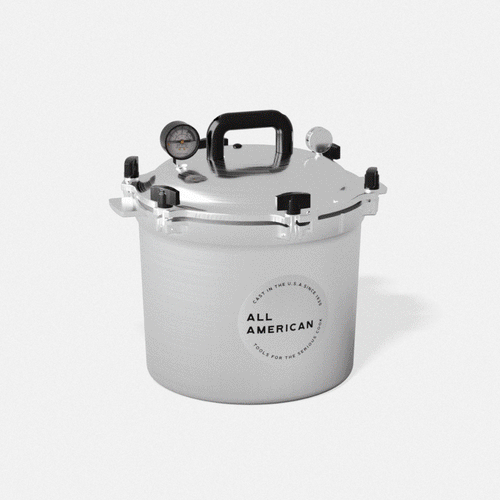 >
>
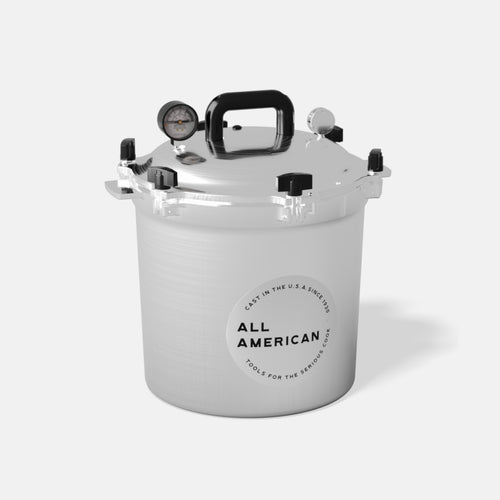 >
>
 >
>
 >
>
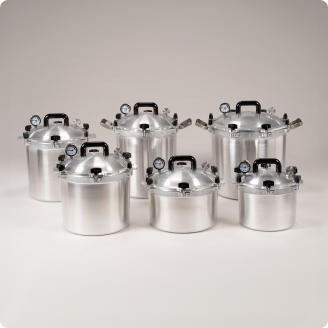
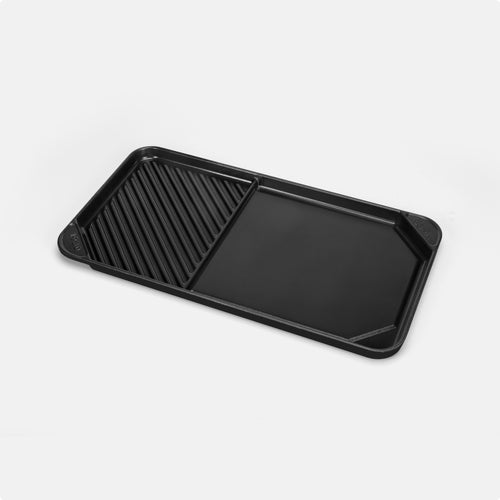
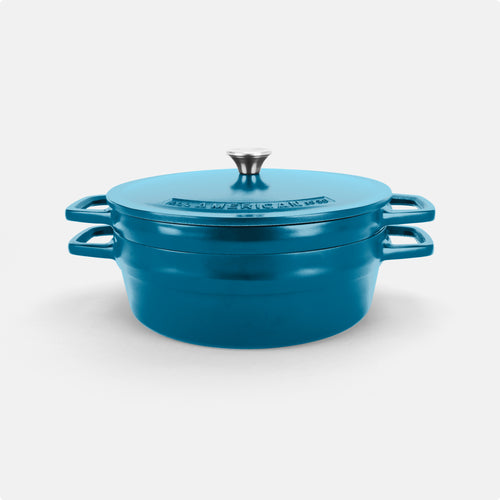
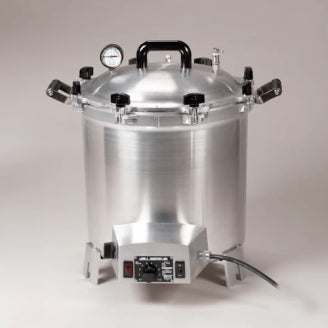
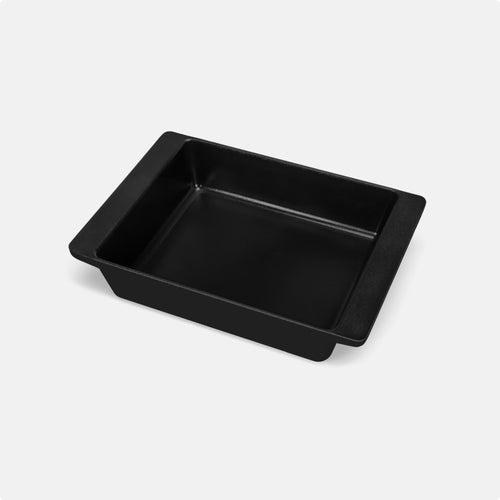 >
>
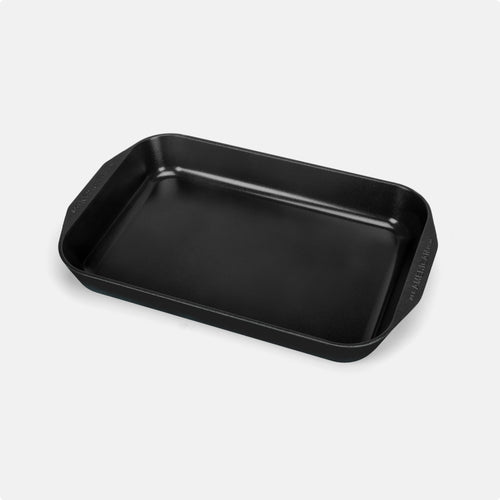 >
>
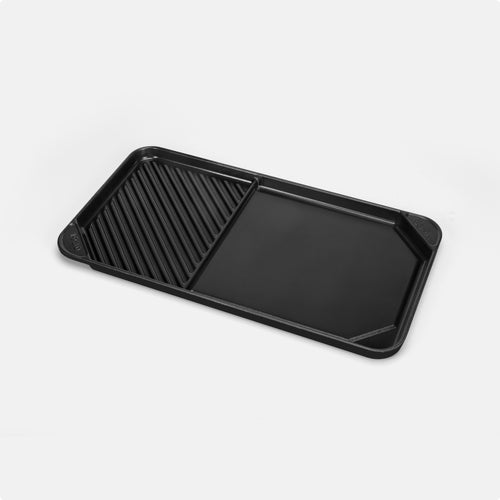 >
>
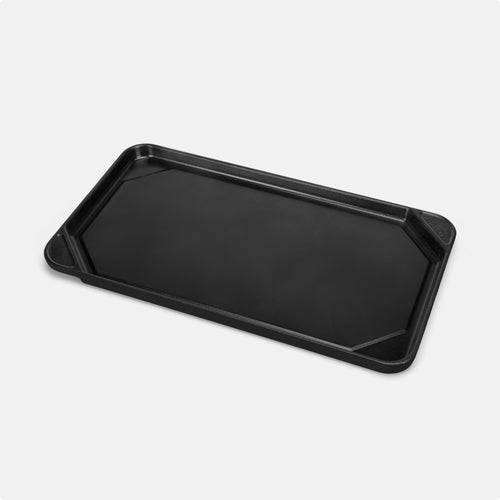 >
>
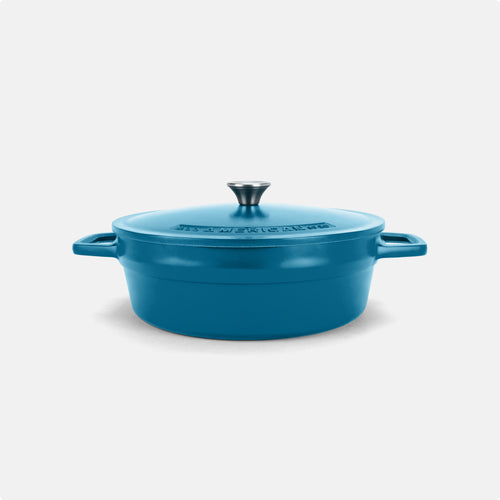 >
>